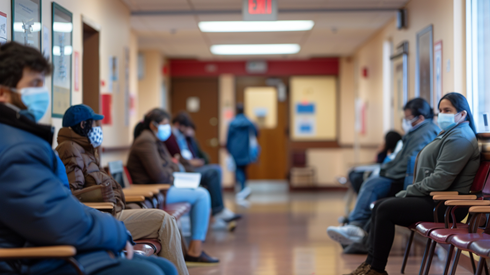Tracking the Reopening: Vaccinations and Economic Activity

R. Scott Mildrum | May 24, 2021

More than a year into the pandemic, COVID-19 remains a dominant factor in the global economic outlook. While current data on vaccination rates and the correlated decline in confirmed cases suggest that there is a clear, bright light at the end of the COVID tunnel, it is important that we remain vigilant. Globally, the recent outbreak in India has sent new daily confirmed cases to record levels as the virus and any potential variants remain a significant source of uncertainty. At the same time, the progress being made in some countries is undeniable and is working to carve out a pathway to normalcy.
Israel is a prime example: More than half of the population is now fully vaccinated, and a higher percentage has received at least one dose—some of the highest vaccination rates in the world. Vaccinations have proven to be highly effective, and the 7-day moving average of new daily confirmed cases in the country has fallen to its lowest level since the beginning of the pandemic (see chart 1).
* Sources for chart 1: Bloomberg and Performa.
In the United States, the vaccine rollout has not yet reached Israel's percentages but is running well ahead of schedule with over 270 million doses administered (see chart 2). Like Israel, the higher vaccination rates are coupled with lower daily confirmed cases, which have fallen back below those seen last fall (40,000 per day). The issue in the United States, however, is that the number of doses administered each day has fallen considerably from the April peaks—a trend that is concerning health experts. With fewer Americans willing to vaccinate, it makes the goal of herd immunity more difficult to achieve and delays the quest to resume normal economic activity across the country.
* Sources for chart 2: Bloomberg and Performa.
To date, we have been encouraged by the reopening process in the United States. A wide range of economic indicators suggest that the recovery continues to strengthen. Closely watched monthly surveys of the manufacturing and service sectors are now running at levels consistent with robust economic activity, and job creation has rebounded after the virus-induced winter slowdown. Moreover, high-frequency (daily/weekly instead of monthly) economic indicators are sending unambiguously positive messages, especially for those industries hit hardest during COVID.
One such high-frequency indicator, daily airline passenger Transportation Security Administration (TSA) screenings, reached a new post-pandemic high of 1.85 million on May 16 and has been north of 1 million since early March (see chart 3).
* Sources for chart 3: Bloomberg and Performa.
Air passenger traffic is not yet back to the pre-pandemic levels of 2–2.25 million per day, but progress is evident. Additionally, hotel occupancy rates increased during the spring travel season with rates topping out around 60 percent, a marked improvement from the levels we saw last summer (see chart 4).
* Sources for chart 4: STR and Performa.
Lastly, restaurants—another hard-hit industry—have also seen an increase in activity in recent months, according to data provided by the reservation app Open Table. While dining rates are still down slightly versus 2019 levels, the trends across major metropolitan areas look favorable (see chart 5).
* Sources for chart 5: Open Table and Performa.
All told, the US economy is gaining momentum, thanks to further progress on vaccinations and continued policy support from both monetary and fiscal authorities. If virus trends remain favorable, accompanied by further reopening and increased economic activity, the growing call for the Federal Reserve to reconsider its highly accommodative policy stance (i.e., bond purchases and near-zero interest rates) will become significantly louder.
About Performa
Performa has been managing assets on behalf of captive and other insurance clients for more than 25 years. Its capabilities include asset allocation, active fixed income, and equity management through diversified mutual funds and separate account portfolios. With offices in the world's largest captive domiciles, including Bermuda, Vermont, and South Carolina, Performa is 100 percent employee-owned and has $5.00 billion in captive assets under management and advisement as of March 31, 2021.
Disclosures
This article is provided for general informational purposes only. The information compiled is from sources deemed to be reliable, but Performa does not warrant its completeness or accuracy. Opinions, estimates, and assumptions expressed herein reflect our judgment as of the date of publication and are subject to change without notice. This material should not be construed as formal investment or financial planning advice nor as a solicitation to purchase or sell specific securities or investment strategies. Investors should always seek professional financial advice regarding the appropriateness of investing in any investment strategy or security, whether discussed here, or otherwise. This material must not be distributed to any third party without prior written consent.
Any statements regarding performance may not be realized, and past performance is not indicative of future results. Investors should note that the value of any investment strategy or security may fluctuate and underlying principal values may rise or fall.
Performa includes P.R.P. Performa Ltd. and its US affiliate, Performa Limited (US), LLC. P.R.P. Performa Ltd. is licensed to conduct investment business by the Bermuda Monetary Authority (BMA). Performa Limited (US), LLC is a Securities and Exchange Commission (SEC) registered investment adviser. This registration does not imply that the SEC or BMA has approved or disapproved of Performa's services, products, or strategies.
R. Scott Mildrum | May 24, 2021




